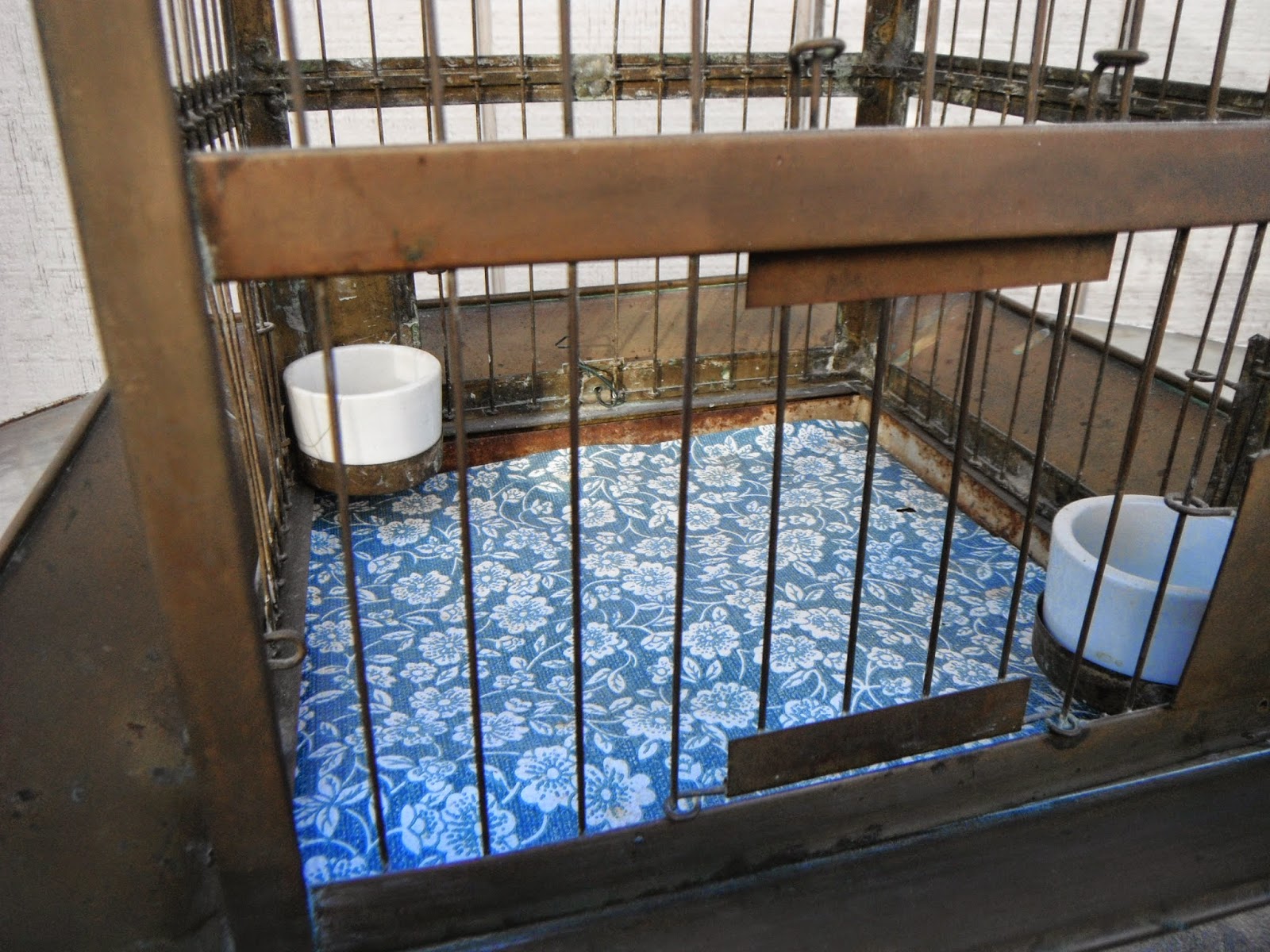guest picture
guest picture
Gone were the delicately-shaped flowing wires. They were replaced with a "Mission" or "bungalow" style of cage that was knows for its "lines". Angles and lines. The intense rectilinear (having many straight lines) design with the broad, overhanging eaves emerged and was patented Sept. 29, 1908.
They had feeders.
They had swings.
They had feeder perches.
They had seed guards.
One even had a seed guard that looked like a picket fence.
Looking online at sites like ebay, Etsy, and Ruby Lane, these Mission style cages do not sell for a lot of money. Some sellers get $45-$100 for a cage. Why is that? They are a century old yet they don't seem to be highly valued or in high demand.
Several years ago, I paid $250 for one. The seller wanted $450. "It's an important piece of history. Why won't you pay more?", he asked. I also paid $225 for one that was complete with the seed guards. I haven't seen many offered that are complete with 4 seed guards. I bought them because they have an important place in the Hendryx time line that I have created in my collection. I had several cages c.1880. (Recently sold). I have one that is plastic with plastic feeders from the 1960s. And I have 49 cages between those.
I don't see these cages as "appealing" as much as they are "historic". Do others see them like that too? There is something about a Victorian brass Hendryx cage with flowing lines that can take my breath away. My first thought with some that I've seen is "I WANT that!!" Not so with these. These are kind of "clunky". Very robust. Sturdy. No frills. Well, I take that back. Those feeder guards that have the opposing hearts definitely are a "frill". Great touch on a very utilitarian cage.
Under-appreciated? I think so. The Andrew B. Hendryx Co. patented these toward the end of the Arts and Crafts movement in the U.S. They stand firmly as a good representation of that architectural design. A little too heavy with the brass? Maybe. But I appreciate them...as a part of history, a part of change, and a part of The Andrew B. Hendryx Co.
If any of you readers have other ideas about these cages, please share them. Is there anyone "out there" that only collects Mission cages? I've talked with plenty of people who only collect Victorian cages. If you have some pictures of other Mission style cages that I haven't featured, please send them to my email address tweetthings53@gmail.com. I will add them as a guest contributor. I enjoy learning new things and hearing other people's opinions. Please feel free to add a comment.
Except for the two guest pictures, these cages are available to purchase. If you would like further information, please write.
Winter is almost over. Soon it'll be time to search for the treasures that are dusty and forgotten in attics, garages, and basements as well as those in flea markets, garage sales, and antique shops.
Happy Hunting.
Barbara


















3 comments:
I love the mission style group! I'd buy them all if I could.
I love the mission style group! I'd buy them all if I could.
I have one of these mission style bird cages without the side insert four seed guards or original feeders. I do have the original Hendryx bird cage stand which came with a expansion spring to hang cage from about 3 inches length. I love these as they have such beautiful detail from the early days of Hendryx manufacturing of cages and stands. Feeder sides also have the scroll flat like metal shields too.
Post a Comment